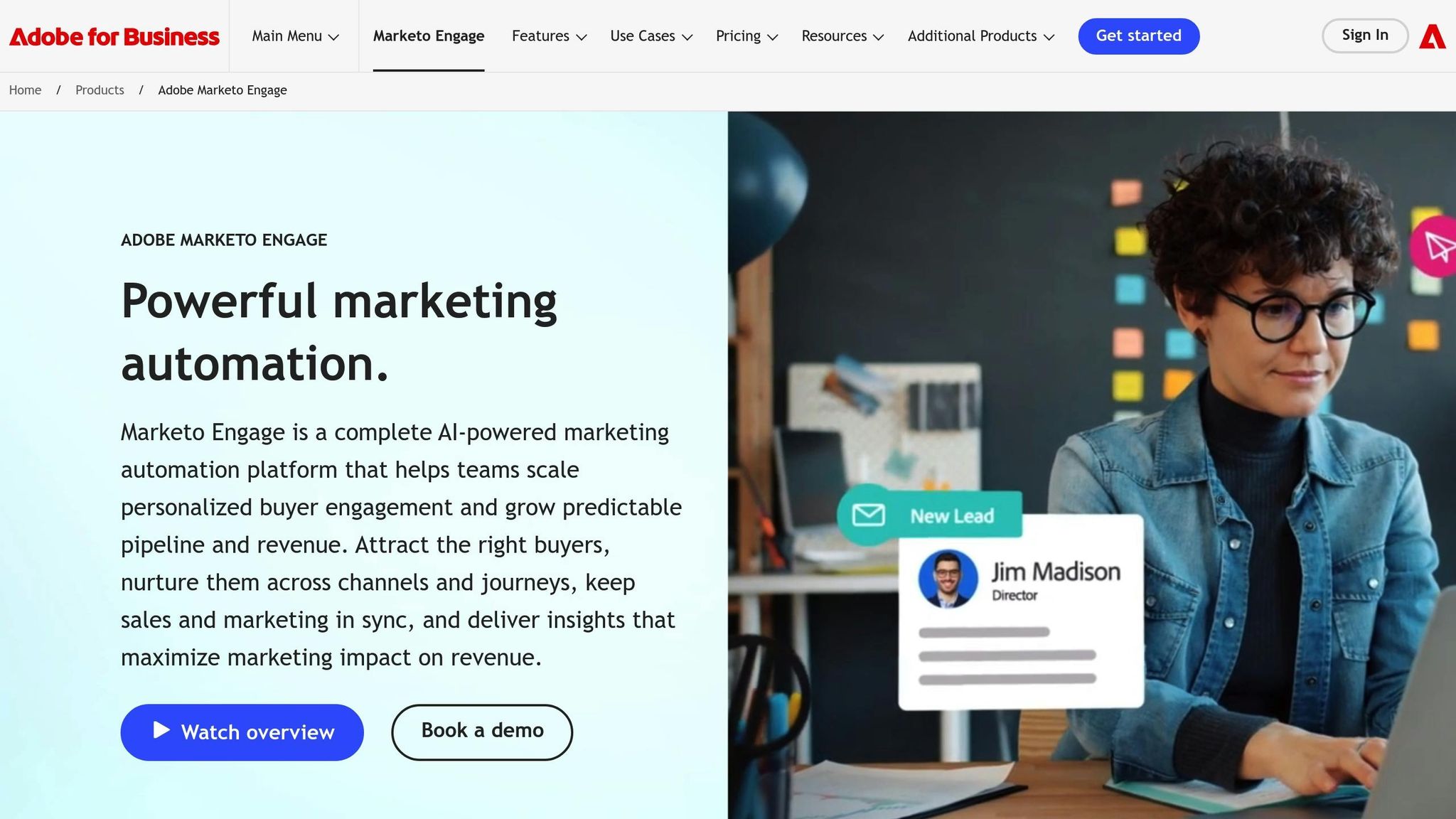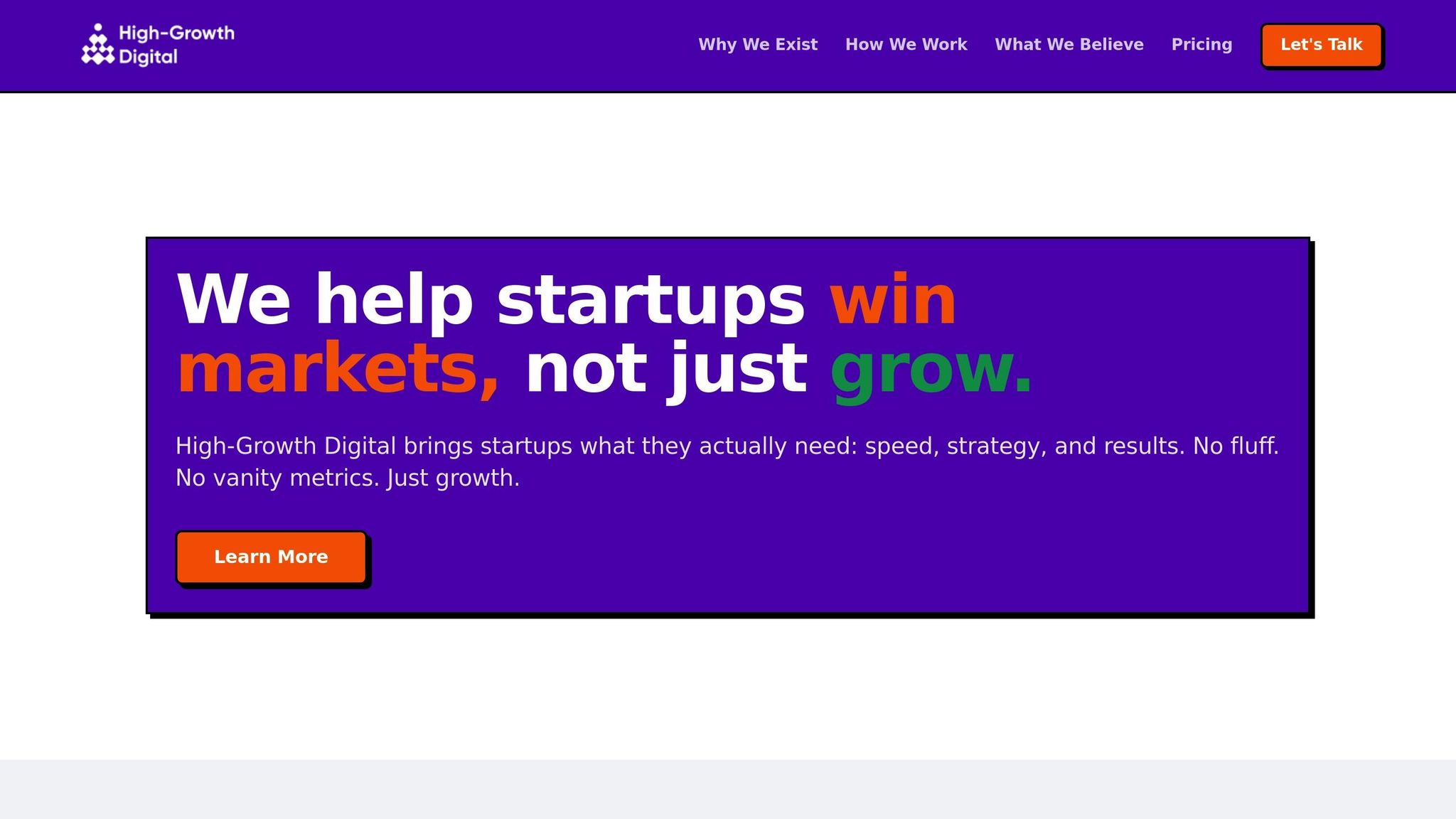How to Measure Lead Nurturing ROI
Learn how to effectively measure the ROI of lead nurturing campaigns, focusing on key metrics and advanced attribution models for better performance.

Want to know if your lead nurturing efforts are worth the investment? Here's the quick answer: Measuring Lead Nurturing ROI helps you understand how much revenue your campaigns generate compared to their costs. This is especially important in technical industries with long sales cycles and complex buyer journeys.
Key Takeaways:
- ROI Formula:
ROI = [(Revenue - Costs) ÷ Costs] × 100 - Core Metrics to Track:
- Conversion Rate: How many leads turn into customers.
- Customer Lifetime Value (CLV): Total revenue per customer over time.
- Cost Per Lead (CPL): The cost of acquiring each lead.
- Challenges:
- Long sales cycles (e.g., 12+ months).
- Multi-stakeholder decisions (e.g., IT, C-suite).
- Offline interactions like demos or proofs-of-concept.
- Data silos between tools like CRMs and marketing platforms.
- Solutions:
- Use multi-touch attribution models to track touchpoints.
- Align measurement periods with sales cycles (e.g., quarterly/annually).
- Tag URLs with UTM parameters for precise tracking.
By focusing on these metrics and addressing challenges, you can uncover which campaigns drive the most revenue and optimize your marketing spend effectively.
How to Achieve 25% More ROI with Marketo in 3 Simple Steps

Key Components of Lead Nurturing ROI
Breaking down the components of lead nurturing ROI helps marketers make smarter decisions by showing how efforts translate into performance and financial outcomes.
Core Metrics to Track
To start evaluating ROI, focus on these three key metrics:
- Conversion Rate: This shows the percentage of leads progressing through your sales funnel. By offering timely and relevant content throughout the buyer's journey, businesses can improve lead-to-customer conversion rates by as much as 20% [1].
- Customer Lifetime Value (CLV): CLV calculates the total revenue a customer is expected to generate over their relationship with your business. For products like enterprise SaaS with subscription models, CLV often surpasses the initial purchase price significantly.
- Cost Per Lead (CPL): CPL measures the cost of acquiring each qualified lead. This includes direct campaign expenses, content production, and the time spent managing nurturing workflows.
"Effective lead nurturing is about delivering the right content to the right person at the right time. Tracking the right KPIs ensures you're continuously optimizing this process for maximum impact." – Digital Marketing Expert [1]
Additionally, monitor email open rates, click-through rates, and lead scoring to gauge how well your content performs. Keep an eye on funnel progression and the transition between Marketing Qualified Leads (MQLs) and Sales Accepted Leads (SALs). Together, these metrics give you a clearer picture of how your campaigns are performing and where adjustments might be needed.
Revenue Attribution in Multi-Touch Campaigns
In technical sales, prospects often interact with multiple touchpoints before making a purchase. For example, they might download a whitepaper, attend a webinar, request a demo, and speak with sales. Revenue attribution helps connect each deal's revenue back to the marketing activities that influenced it [3].
Multi-touch attribution tracks every meaningful interaction a prospect has with your brand [2]. Different attribution models can help you determine which touchpoints are most impactful:
- First-Click Attribution: Gives 100% credit to the first interaction.
- Last-Click Attribution: Assigns all credit to the final interaction.
- Linear Attribution: Distributes credit equally across all touchpoints.
- Time-Decay Attribution: Weighs interactions closer to conversion more heavily.
- Data-Driven Attribution: Uses machine learning to allocate credit based on performance data [3].
"The primary problem that most marketers run into is they've actually never seen attribution that works…anything that uses Google Tag Manager or the Google infrastructure doesn't provide transparency. You can't see cost - ever." – Ryan Koonce, Chief Executive Officer of Attribution [3]
To improve accuracy, tag your URLs with UTM parameters for precise tracking. Experiment with different attribution models and integrate your attribution tools with ad platforms to capture detailed cost data. This approach ensures a more accurate alignment of marketing spend with revenue outcomes.
Cost Analysis and Resource Allocation
For a complete ROI calculation, you need to account for all costs - not just the obvious ones like ad spend or email platform fees, but also the less visible expenses. Here’s a breakdown of important cost factors:
- Marketing Automation Tools: Beyond subscription fees, include costs for implementation, training, and ongoing maintenance.
- Sales Enablement Costs: These include CRM systems, lead scoring tools, and the time sales teams dedicate to following up on nurtured leads.
- Content Creation Expenses: Producing technical materials like whitepapers, case studies, and product demos requires specialized skills and resources for writing, design, video production, and reviews.
- Personnel Hours: Both marketing and sales teams spend significant time setting up campaigns, analyzing performance, and refining nurturing strategies.
Don’t forget to factor in overhead costs and expenses tied to lead follow-up efforts, such as email campaigns, direct mail, and social media interactions. Regularly analyze these costs against revenue outcomes. For instance, you might find that high-touch nurturing campaigns, while more expensive upfront, deliver better ROI. Alternatively, automating repetitive tasks could free up your team for more impactful activities [4].
Step-by-Step Guide to Calculating Lead Nurturing ROI
Now that we’ve covered the basics, let’s dive into the process of calculating the financial return on your lead nurturing campaigns.
Breaking Down the ROI Formula
The formula for lead nurturing ROI is simple:
ROI = (Revenue Generated – Total Campaign Cost) / Total Campaign Cost × 100 [1].
Here’s what each part means:
- Revenue Generated: This includes all income directly linked to your nurturing efforts. It might come from new customers, upsells from existing ones, or reactivated leads. For subscription-based products, you can factor in the full contract value or annual recurring revenue (ARR) from converted leads.
- Total Campaign Cost: This covers all expenses tied to nurturing, including direct costs like email platforms and content creation, as well as the broader integrated costs discussed earlier.
Now, let’s see how these components fit together in a real-world example.
Practical Example: B2B Software Scenario
Imagine a B2B software company that generates 500 leads monthly, has an average sale price of $100, and a database of 50,000 contacts. Over a year, their metrics look like this:
| Variable | Monthly | Annual |
|---|---|---|
| Acquired Leads | 500 | 6,000 |
| Database Size | - | 50,000 |
| Average Sale Price | $100 | $100* |
| Conversion Rate (Nurtured) | - | 3% |
| Conversion Rate (Non-Nurtured) | - | 1.5% |
| Total Costs | $5,000 | $60,000 |
| Revenue from Nurtured Leads | $7,250 | $87,000 |
*Note: The average sale price remains consistent per transaction.
In this scenario, the company’s nurturing campaigns generate $87,000 in annual revenue from nurtured leads. With total campaign costs of $60,000 for the year, the ROI works out like this:
ROI = ($87,000 – $60,000) / $60,000 × 100 = 45%.
This means the company achieves a 45% return on its lead nurturing investment.
Adjusting for Longer Sales Cycles
For technical products with sales cycles that can range from six months to two years, calculating ROI becomes a bit trickier.
The solution? Align your measurement period with the length of your sales cycle. Instead of tracking ROI monthly, consider analyzing it quarterly or annually to better capture the full impact of your nurturing efforts. For instance, if your sales cycle spans 18 months, you’d measure the investments made in early 2024 against the revenue generated through mid-2025.
This approach ensures your ROI analysis reflects the reality of longer sales cycles. To supplement this, keep an eye on metrics like funnel progression, engagement scores, and sales-qualified leads (SQLs) to gauge effectiveness early on. It’s worth noting that nearly half of sales happen after five or more interactions [6], highlighting the importance of consistent, long-term nurturing - especially for technical products that demand education and relationship-building over time.
Advanced Attribution Models for Lead Nurturing ROI
When buyer journeys get complicated, basic attribution models often fall short. Advanced attribution models help uncover the value of each interaction, building on earlier cost and revenue data to refine how we measure performance.
Multi-Touch Attribution
Multi-touch attribution (MTA) takes a step beyond basic attribution by assigning proportional credit to multiple touchpoints throughout a customer's journey. This approach provides a more complete view of how different channels impact conversions [7]. It's especially relevant for modern B2B buyers who interact with a brand several times before making a purchase decision.
For technical products, where buyers often need substantial education and validation, MTA is a game-changer. It helps pinpoint which touchpoints are most influential at different stages of the funnel, enabling smarter decisions about budget allocation and campaign strategies [7]. The results speak for themselves: by 2024, more than half of marketers were using MTA, and those combining data-driven models with automated bidding reduced cost-of-sales by 18% compared to relying on last-click attribution alone [7].
To get started with MTA, define clear conversion goals - whether it's qualified leads, form submissions, or demo requests. Map out your customer journey to decide whether a simpler model or one tailored to various funnel stages works best. Then, ensure consistent tracking across all touchpoints using tools like UTM parameters, tracking pixels, tags, call tracking, and CRM integration [7].
Time-Decay Attribution for Technical Buyers
Time-decay attribution gives more weight to interactions closer to the conversion, while earlier touchpoints receive less credit [8]. This model emphasizes recent activities, which tend to play a more direct role in driving conversions.
For technical buyers, this approach strikes a balance between early awareness efforts and the critical touchpoints that close the deal. Unlike linear attribution, which treats all interactions equally, time-decay attribution reflects the reality that a demo request or pricing inquiry often has a much stronger impact than reading a blog post months earlier.
To implement time-decay attribution effectively, adjust the "half-life" to match your sales cycle. For example, if your sales cycle lasts two months or longer, consider using a 30- or 45-day half-life [9].
Attribution Model Comparison
Not all attribution models are created equal, and the best choice depends on your business goals, sales cycle, and marketing strategy [7]. Here's a comparison of the main models and their strengths and limitations for technical products:
| Attribution Model | Credit Distribution | Ideal For | Limitations |
|---|---|---|---|
| First-Touch | 100% to first interaction | Evaluating brand discovery and top-of-funnel efforts | Overlooks nurturing and closing stages |
| Last-Touch | 100% to final interaction | Identifying conversion drivers and bottom-funnel performance | Ignores early awareness and consideration phases |
| Linear | Equal credit to all touchpoints | Simple multi-touch analysis with fair distribution | Doesn't account for varying touchpoint importance |
| Time-Decay | More credit to recent interactions | Long sales cycles with ongoing buyer engagement | May undervalue key early-stage interactions |
| U-Shaped | 40% to first and last touchpoints, 20% to middle | Highlighting both initial awareness and final conversion | Tends to downplay mid-funnel activities |
For technical products with intricate buyer journeys, time-decay and multi-touch models often deliver the most actionable insights. They reflect the reality that 71% of B2B buyers download multiple content pieces during their decision-making process [9], while acknowledging that not all touchpoints carry the same weight.
"There is no wrong answer... It depends on your business needs and one model isn't better than another. As we've discussed, finding data-driven insights that help you drive revenue is the most important part of building a marketing attribution model."
- Craig Jordan, Founder and CEO at SaaScend [10]
These advanced models provide sharper insights into ROI, allowing for smarter, data-backed adjustments that strengthen your lead nurturing efforts.
Measuring Long-Term ROI Impact
While immediate conversion metrics provide a snapshot, the real value of marketing efforts unfolds over time. Long-term ROI is built on sustained growth and strong customer relationships, offering a more complete picture of marketing effectiveness when paired with advanced attribution models.
Pipeline Acceleration and CLV Projections
Lead nurturing goes beyond just turning prospects into customers - it transforms your entire sales pipeline. By delivering tailored content to multiple decision-makers, these campaigns create connections that shorten sales cycles and increase deal sizes [11].
This efficiency is especially critical in high-value B2B sales, where cycles can last 4–6 months and involve anywhere from 5 to 50 touchpoints before a lead converts [13]. Over time, accelerated pipelines lead to steady, predictable revenue growth.
Predictive customer lifetime value (CLV) models, powered by statistical analysis and machine learning, help businesses forecast revenue by analyzing purchase frequency, retention rates, and spending habits [14]. For instance, Couchbase leveraged this strategy by conducting a detailed content audit. They analyzed content by persona, buying stage, and pain points, using CRM data to craft persona-focused plans. The result? A significant boost in account engagement and $1.5 million added to their pipeline [11].
For technical products, maintaining a healthy LTV-to-CAC (Customer Acquisition Cost) ratio of 3:1 - generating $3 in lifetime revenue for every $1 spent - is a key benchmark [15].
"More leads do not equal more sales. More developed leads equal more sales." - Simon Villeneuve [13]
Churn Rate Reduction
Reducing churn is one of the most effective ways to amplify ROI over time. A 5% increase in customer retention can lead to a profit boost of 25% to 95% [17], while acquiring new customers is 5 to 25 times more expensive than retaining existing ones [16][17].
Lead nurturing plays a vital role in reducing churn by fostering trust before a customer even makes their first purchase. When prospects receive consistent, valuable content throughout their buying journey, they feel more confident in your solution, leading to higher satisfaction and longer retention post-conversion.
Take T-Mobile, for example. By using real-time customer feedback and conversation intelligence, they achieved a record-low churn rate of under 1% year over year [18]. Similarly, Zurich Insurance adopted a customer experience management platform to analyze and act on feedback, resulting in a 20-point increase in their Net Promoter Score. Promoters not only contributed 27% more in premiums but were also five times less likely to leave within 12 months [18].
Key metrics to monitor for churn reduction include customer retention rate, CLV, Net Promoter Score, and customer satisfaction scores. Companies that prioritize customer experience report an average revenue growth increase of 15% annually [17], with some achieving double the revenue growth of their competitors over five years [18].
Alignment with High-Growth Digital's Approach

Navigating long sales cycles with multiple touchpoints requires a structured, systematic approach. High-Growth Digital’s 90-Day Brand Implementation Sprint is designed to tackle this challenge, making long-term ROI measurement both practical and actionable.
The sprint incorporates several key elements:
- Technical Value Architecture: This component connects product capabilities to customer outcomes, creating a solid foundation for accurate attribution modeling.
- Brand Translation System: By tailoring nurturing content to resonate with diverse stakeholders, this system supports multi-touch attribution and builds trust throughout extended B2B buying cycles.
- Sustainable Growth System: Instead of relying on one-off campaigns, this approach establishes repeatable processes that enhance pipeline velocity and CLV over time.
These strategies are particularly beneficial for industries like biotech, AI/ML, enterprise SaaS, and health technology, where sales cycles are often complex and lengthy. Companies with well-aligned sales and marketing teams are 67% more effective at closing deals and 58% better at retaining customers [12].
"If your business is struggling to convert leads, the problem isn't necessarily lead quality - it's lead maturity. The most successful companies recognize that the gap between marketing and sales is where they're bleeding revenue." - Simon Villeneuve [13]
The sprint’s deliverables include tools and processes to accurately track long-term impacts, enabling technical founders to demonstrate ROI to stakeholders while laying the groundwork for sustainable, scalable growth.
Conclusion: Key Takeaways for Measuring Lead Nurturing ROI
Understanding lead nurturing ROI goes beyond tracking quick wins - it’s about uncovering how your marketing investments drive sustainable growth over time. For technical founders, mastering this measurement can provide a clear edge, enabling smarter marketing decisions and showcasing value to stakeholders.
To measure ROI effectively, focus on essential metrics like conversion rates, click-through rates, and customer conversion time [19]. Companies that implement lead nurturing programs often report more sales opportunities from nurtured leads [20]. Comparing these metrics helps gauge how well your efforts are performing and where improvements can be made.
For deeper insights, advanced attribution models offer a more nuanced look at your marketing's impact. While only 17% of organizations have adopted comprehensive attribution strategies [21], those that do report up to a 30% increase in marketing ROI [21]. Models like multi-touch attribution track every interaction in the buyer’s journey, while time-decay models are ideal for shorter sales cycles. The trick is choosing a model that aligns with your business and sales process.
Measuring the long-term impact of your nurturing efforts is equally important. Metrics like customer lifetime value and churn rate reduction provide a fuller picture of sustained ROI. For example, increasing customer retention by just 5% can boost profits by 25% to 95% [22][23], while acquiring new customers costs five times more than retaining current ones [22][24]. This highlights the importance of retention-focused strategies, especially for technical products with longer or more complex sales cycles.
"Determining your lead nurturing ROI is critical in understanding your campaign's overall success." - Campaign Monitor [5]
For technical founders navigating complex B2B markets, a systematic approach to measurement is essential. Combining robust attribution models, long-term impact tracking, and data-driven optimization creates a strong foundation for growth. Companies that excel in lead nurturing generate 50% more sales-ready leads at 33% lower costs [23], proving the real-world benefits of a measurement-focused strategy.
Measuring ROI is not a one-and-done task - it’s an ongoing process that informs strategy, justifies investments, and drives continuous improvements. By balancing immediate performance metrics with long-term value creation, you can build lead nurturing programs that not only convert leads but also cultivate enduring customer relationships. With precise attribution and long-term tracking, your strategy can deliver both short-term wins and lasting success.
FAQs
How can multi-touch attribution models help measure lead nurturing ROI more accurately?
Multi-Touch Attribution: A Smarter Way to Measure ROI
Multi-touch attribution (MTA) models take a more nuanced approach to measuring the return on investment (ROI) from lead nurturing efforts. Instead of giving all the credit to a single interaction, like traditional single-touch models do, MTA evaluates and assigns value to every meaningful touchpoint in a customer’s journey. This method paints a much clearer picture of how different campaigns and channels work together to drive conversions.
With MTA, marketers gain the insights they need to pinpoint the strategies that deliver the best results. Armed with this knowledge, they can allocate budgets more effectively and refine their campaigns for better performance. The result? Smarter marketing decisions, improved ROI, and growth that’s built to last.
How can I align lead nurturing metrics with longer sales cycles in technical industries?
To align your lead nurturing metrics with longer sales cycles, it’s essential to start with clear criteria for what defines a sales-ready lead. Work closely with both marketing and sales teams to develop a lead qualification process that matches the complexity and duration of your sales cycle. This collaboration ensures a seamless handoff when leads are ready to move from nurturing to active sales engagement.
Implement a lead scoring system to rank prospects based on their level of engagement and readiness to buy. Keep a close eye on key metrics like conversion rates, lead response times, and customer lifetime value to assess how well your nurturing efforts are working. Be ready to tweak your strategies to maintain effectiveness and keep your campaigns focused on ROI. This structured approach ensures your metrics are tailored to meet the unique challenges of longer sales cycles, especially in technical industries.
How does lead nurturing improve customer lifetime value and retention over time?
Lead nurturing is key to increasing customer lifetime value (CLV) and enhancing retention rates by creating meaningful, long-lasting connections with customers. When businesses provide personalized communication and customized content, they keep customers engaged and encourage loyalty.
Customers who feel nurtured are more inclined to make repeat purchases and stick with a brand, boosting their overall value over time. On top of that, effective lead nurturing helps cut acquisition costs and builds trust, ultimately driving higher revenue and steady growth for your business.




